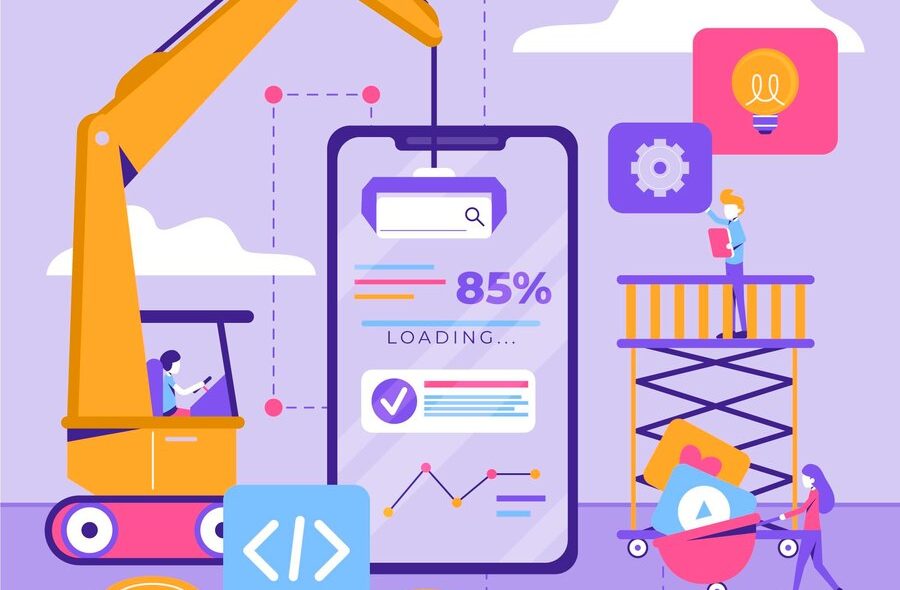In the rapidly evolving digital commerce landscape, staying ahead requires more than just having a responsive website or a native mobile app. The modern consumer demands faster, more reliable, and immersive online shopping experiences. This is where PWA eCommerce development becomes not just relevant, but revolutionary. Progressive Web Apps (PWAs) merge the best features of web and mobile applications to create seamless, app-like experiences directly within the browser — no downloads required.
The Evolution of Online Shopping
Mobile commerce has grown exponentially in the last decade. According to Statista, over 70% of eCommerce traffic comes from mobile devices. Yet, traditional mobile websites often fall short in delivering the intuitive, smooth, and engaging experience users crave. Native apps, though more immersive, suffer from their own limitations — high development costs, platform restrictions, and dependence on app stores for distribution.
This dichotomy has paved the way for PWA on eCommerce platforms. PWAs combine the strengths of both web and app technologies, resulting in faster load times, offline capabilities, push notifications, and an overall smoother shopping journey. These capabilities not only elevate the user experience but significantly enhance business metrics such as engagement, conversions, and customer retention.
What Makes PWAs Ideal for eCommerce?
The intrinsic power of Progressive Web Apps lies in their adaptability and performance. Built using standard web technologies like HTML, CSS, and JavaScript, PWAs work across all devices and browsers, eliminating the friction associated with platform-specific development. Here’s why they’re becoming indispensable for digital storefronts:
1. Lightning-Fast Load Speeds
PWAs utilize service workers to cache assets and data efficiently, resulting in near-instant loading even on slow or unreliable networks. For eCommerce businesses, speed is a non-negotiable factor — every second of delay can result in a significant drop in conversions.
2. Offline Accessibility
One of the standout features of PWAs is their ability to function offline or in low-connectivity scenarios. Users can browse products, access saved carts, and even complete transactions without a full internet connection. This is a game-changer for users in remote or under-connected regions and leads to broader market penetration.
3. App-Like User Experience
PWAs mimic the look and feel of native apps — complete with smooth animations, intuitive gestures, and full-screen interfaces. This familiarity increases user satisfaction and time-on-site while eliminating the barrier of downloading from an app store.
4. Push Notifications
PWAs allow eCommerce businesses to send timely and personalized push notifications directly to the user’s device — even when the browser is not actively open. This enhances re-engagement, promotes flash sales, and reduces cart abandonment.
5. Cost-Effective Development
Traditional mobile apps require separate development for iOS and Android platforms, often doubling the cost and time required. In contrast, PWAs are built once and run everywhere, drastically reducing development overhead without compromising on features.
Industry Adoption: PWAs Leading the Charge
Major brands are already reaping the benefits of investing in PWA on eCommerce. Here are a few noteworthy examples:
-
Alibaba: The Chinese retail giant witnessed a 76% increase in mobile conversions after switching to a PWA.
-
Flipkart: India’s top online marketplace launched “Flipkart Lite,” a PWA that resulted in a 70% increase in conversions.
-
Lancome: The luxury cosmetics brand experienced a 17% boost in conversions and a 53% increase in mobile sessions after implementing a PWA.
These success stories underscore the transformative potential of PWAs in enhancing user experience and driving revenue growth.
Challenges in PWA eCommerce Development
While the benefits are compelling, PWA eCommerce development is not without challenges. Businesses must be aware of the following when making the shift:
-
Browser Compatibility: Although major browsers support PWAs, there are still discrepancies in feature support, particularly with Safari.
-
Limited Access to Native APIs: PWAs have less access to some device-specific features like Bluetooth or advanced camera controls compared to native apps.
-
App Store Exposure: Businesses miss out on visibility in traditional app marketplaces unless they package their PWAs for stores like Google Play or the Microsoft Store.
These hurdles, however, are rapidly diminishing as web standards evolve and support increases across devices and platforms.
The Future of PWA in eCommerce
Looking ahead, PWAs are poised to become the de facto standard for mobile commerce. With the increasing adoption of 5G, wearable devices, and voice commerce, PWAs offer a nimble and scalable foundation for innovation. Their ability to adapt to new technologies while delivering consistent performance makes them a future-proof solution.
Emerging trends such as headless commerce, where front-end and back-end systems operate independently, align perfectly with the architecture of PWAs. This decoupling allows for greater flexibility, faster updates, and a truly omnichannel experience.
Final Thoughts
In a world where attention spans are short and user expectations are sky-high, PWA eCommerce development offers a compelling blueprint for success. By combining speed, reliability, and a native app experience with the openness and reach of the web, Progressive Web Apps redefine what’s possible in online retail.
 :
https://www.pinterest.com/antoniocrocomb/_pins/
:
https://www.pinterest.com/antoniocrocomb/_pins/

